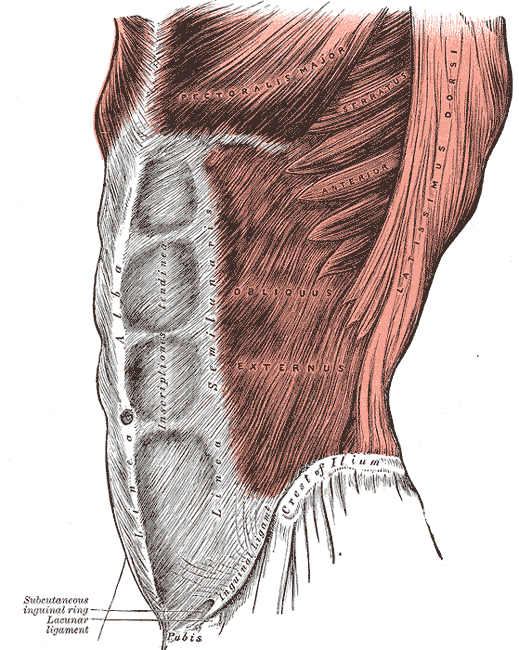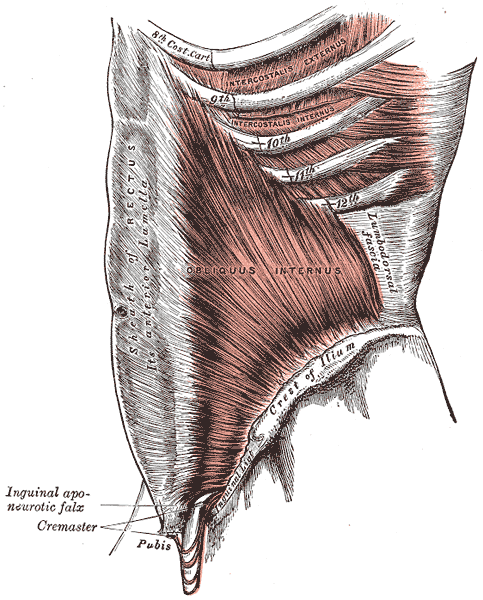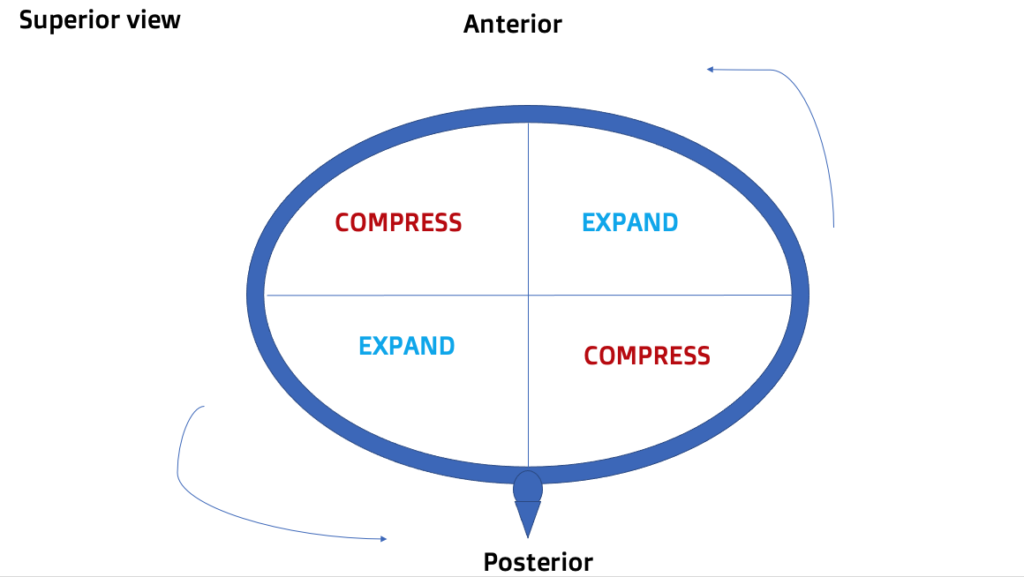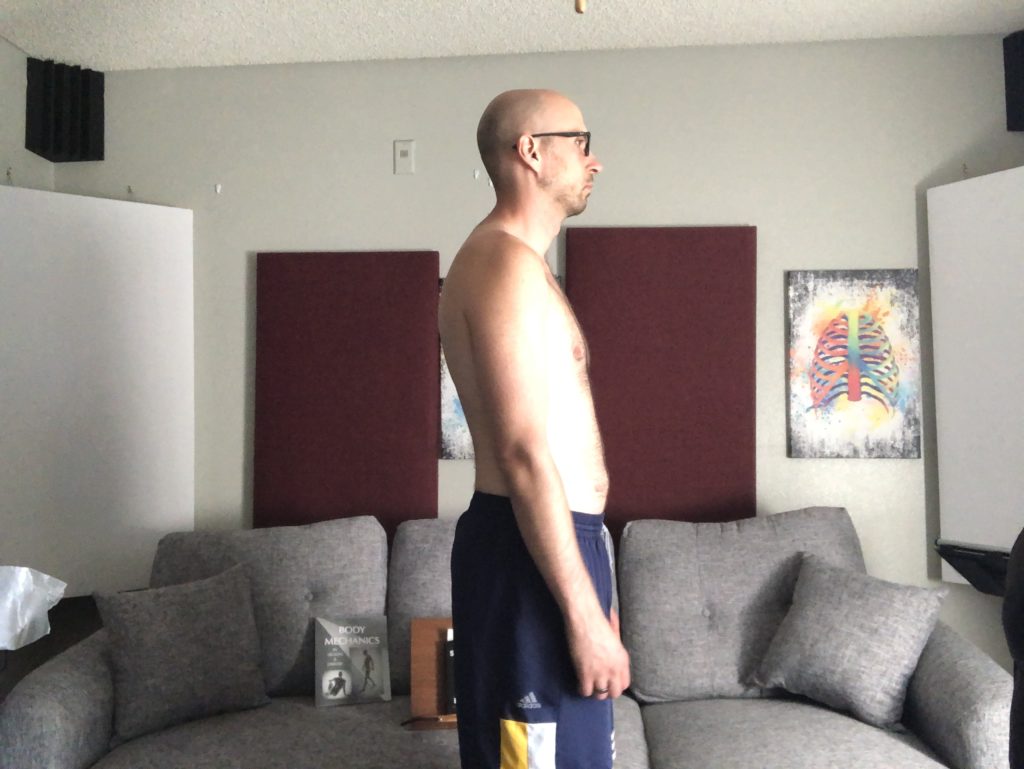 20 Second Tight Psoas Release (& Fix Long-Term)
20 Second Tight Psoas Release (& Fix Long-Term)
The Zac Cupples Show
🏃 Tired of searching for how to move better on youtube? Get personalized coaching with myself and my coaches: 🚀 Unlock Hip Flexor Freedom in Seconds! 🚀 Discover the secret to banishing hip flexor tightness with lightning speed! Dive into a game-changing routine that promises to transform your mobility and comfort in under a minute. Say goodbye to discomfort and hello to effortless movement. You'll have the chillest psoas in da game! #psoas #HipFlexor #posture #pain #mobility ⏰ TIMESTAMPS ⏰ (00:00) - This release WORKS (01:07) - How long does it last though? (the long...
info_outline Fix Rib Flare FAST (In Less Than 5 Minutes a Day)
Fix Rib Flare FAST (In Less Than 5 Minutes a Day)
The Zac Cupples Show
🏃 Tired of searching for how to move better on youtube? Get personalized coaching with myself and my coaches: 🌟 **Transform Your Posture: The Ultimate Rib Flare Fix!** 🌟 Dive into a groundbreaking journey to reshape your ribcage and enhance your mobility. Discover three pivotal exercises designed to address the common yet overlooked issue of rib flare, transforming not just your posture but your overall movement quality. **Embark on your transformation journey now!** #RibFlare #Posture #Mobility (00:00) - Can this even be fixed? (00:41) - This MASSIVE mistake ruins your results...
info_outline 3 Exercises That Fix 90% of Problems
3 Exercises That Fix 90% of Problems
The Zac Cupples Show
🏃 Tired of searching for how to move better on youtube? Get personalized coaching with myself and my coaches: 🌟 Unlock Ultimate Mobility: A Game-Changer for Pain-Free Movement! 🌟 Embark on a transformative journey to conquer common mobility restrictions with three groundbreaking exercises. Dive into a world where enhanced flexibility, strength, and performance are within your grasp. **Experience the revolution in mobility today!** #Mobility #PainFreeLiving #Flexibility ⏰ TIMESTAMPS ⏰ (00:00) - Rotation nation (01:33) - The reason movement becomes limited (03:49) - How...
info_outline Fix Pooch Belly Fast (In Less Than 5 Minutes a Day)
Fix Pooch Belly Fast (In Less Than 5 Minutes a Day)
The Zac Cupples Show
🏃 Tired of searching for how to move better on youtube? Get personalized coaching with myself and my coaches: 🌟 **Unlock the Secret to a Flatter Belly - No Crunches Required!** 🌟 Discover groundbreaking exercises that defy traditional fat loss and posture correction methods. Dive into a revolutionary approach that reshapes your abdominal appearance by addressing the underlying postural components. Say goodbye to the pooch belly with simple, effective moves that promise visible changes. **Embark on your journey to a sleeker silhouette today!** #FlatterBelly #PostureCorrection...
info_outline How To Improve Sitting (It's Not JUST Posture)
How To Improve Sitting (It's Not JUST Posture)
The Zac Cupples Show
🏃 Care about improving your health, mobility, and fitness? Work with myself or one of my coaches. Schedule here: 🌟 **Transform Your Sitting Experience!** 🌟 Unlock the secret to comfortable sitting with groundbreaking strategies that defy conventional wisdom. From eye-saving techniques to posture-transforming exercises, this video is your ultimate guide to conquering discomfort in the digital age. Say goodbye to soreness and hello to a new era of ergonomic enlightenment. **Dive in and revolutionize the way you sit today!** #SittingComfort #Ergonomics #sitting #HealthyPosture...
info_outline Fix Posture and Muscle Imbalances FAST
Fix Posture and Muscle Imbalances FAST
The Zac Cupples Show
🏃 Care about improving your health, mobility, and fitness? Work with myself or one of my coaches. Schedule here: 🌟 Unlock Symmetry: Break Free from Imbalance and Posture Myths 🌟 Feeling off-kilter, twisted, or battling muscle imbalances? It's time to challenge the conventional stretch-and-strengthen approach and explore the truth behind achieving a more balanced body. This video is your guide to debunking myths and embracing the nuances of your unique posture. What You'll Discover: - Insight into why striving for perfect symmetry might not be the goal. - The critical role of the...
info_outline Fix Your Shoulder Internal Rotation FAST
Fix Your Shoulder Internal Rotation FAST
The Zac Cupples Show
🏃 Care about improving your health, mobility, and fitness? Work with myself or one of my coaches. Schedule here: 🌟 Transform Your Shoulder Mobility: The Ultimate Guide 🌟 Struggling with limited shoulder internal rotation? Discover the game-changing exercise that's revolutionizing shoulder health and performance. This video is your roadmap to unlocking the full potential of your shoulders, ensuring you can reach, lift, and perform without pain. What You'll Learn: - The critical role of the rib cage in achieving optimal shoulder rotation. - A step-by-step guide to exercises that...
info_outline You Won't Believe What This Does for Your Neck
You Won't Believe What This Does for Your Neck
The Zac Cupples Show
🏃 Care about improving your health, mobility, and fitness? Work with myself or one of my coaches. Schedule here: 🌟 Unlock Neck Comfort: Overlooked Solutions for Persistent Pain 🌟 Tired of neck pain that just won't quit, even after stretching, chin tucks, and posture adjustments? This video is your key to unlocking the relief you've been searching for. What You'll Discover: - Innovative strategies to address often overlooked factors contributing to neck discomfort. - A transformative exercise targeting the thoracic spine, the true base of your neck, for immediate relief. -...
info_outline 3 Exercises That Fix 90% of Low Back Pain
3 Exercises That Fix 90% of Low Back Pain
The Zac Cupples Show
🏃 Care about improving your health, mobility, and fitness? Work with myself or one of my coaches. Schedule here: 🌟 Transform Your Lower Back Comfort with Just 3 Moves! 🌟 Battling lower back discomfort? It's time to revolutionize your approach to back health with three essential movements designed to enhance mobility and alleviate pain. What's Inside: - Discover three foundational movements to address common lower back mobility needs. - Learn techniques to distribute spinal load more evenly, ensuring each segment moves optimally. - Master the art of creating more space in your...
info_outline This INSTANTLY Improves Your Mobility
This INSTANTLY Improves Your Mobility
The Zac Cupples Show
🏃 Care about improving your health, mobility, and fitness? Work with myself or one of my coaches. Schedule here: 🌟 Unlock Incredible Shoulder Mobility with Just One Exercise! 🌟 Are you seeking a quick and effective way to enhance your shoulder mobility? Look no further! This video unveils a simple yet powerful exercise that can revolutionize your shoulder flexibility and strength. What You'll Discover: - A unique hanging exercise that expands shoulder joint space and improves mobility. - Techniques to integrate rib cage dynamics into your routine for optimal shoulder movement. -...
info_outlineHow rotational athletes can fool you and your measures
Sports such as golf, baseball, tennis, and more involve TONS of rotation, yet are certain athletes better predisposed to rotate well based on ribcage structure? Can tests be thrown off because of particular sport adaptations?
We dive into these questions today. Here, you’ll learn:
- Which infrasternal angle presentation has easier rotational capabilities
- If ribcage structure predisposes someone to be “GREAT” at their craft
- What shoulder external rotation really means in this population
Be prepared, folks, to better help your supreme rotational clientele.
Check out Movement Debrief Episode 146 below to learn more!
Watch the video here for your viewing pleasure.
If you want to watch these live, add me on Instagram.

 t
t Show notes
Check out Human Matrix promo video here.
Here are some testimonials for the class.
Want to sign up? Click on the following locations below:
April 10th-11th, 2021, Warren, OH (Early bird ends March 14th at 11:55 pm)
May 29th-30th, 2021 Boston, MA (Early bird ends April 25th at 11:55 pm!)
August 14th-15th, 2021, Ann Arbor, MI (Early bird ends July 18th at 11:55 pm!)
September 25th-26th, 2021, Wyckoff, NJ (Early bird ends August 22nd at 11:55 pm)
October 23rd-24th, Philadelphia, PA (Early bird ends September 26th at 11:55pm)
November 6th-7th, 2021, Charlotte, NC (Early bird ends October 3rd at 11:55 pm)
Montreal, Canada (POSTPONED DUE TO COVID-19) [6 CEUs approved for Athletic Therapists by CATA!]
Or check out this little teaser for Human Matrix home study. Best part is if you attend the live course you'll get this bad boy for free! (Release date not known yet :(
Bill Hartman - Daddy-O Pops himself. He is THE GUY for all things biomechanics
Authentic Movements - One of the best Yoga Teacher Training systems out there, and the one I choose to teach through.
Steph Gongora - An excellent yoga instructor and biomechanical BOSS.
The torso integration hypothesis revisited in Homo sapiens: Contributions to the understanding of hominin body shape evolution - One of the best articles that goes into ribcage shape and more!
Which infrasternal angle is better for rotation?
Question: I have noticed that roughly 75-80% of my baseball players are narrow infrasternal angles (ISA). Do you feel this is representative of a normal population? I'm wondering if this is a case of selection bias where narrow ISA's, being more eccentrically oriented, have an easier time rotating, and therefore would be more likely to advance in a rotational sport like baseball or golf. Whereas a more concentrically oriented wide ISA may have a more difficult time and as a result would more bias towards sports requiring less rotation.
Watch the answer here.
Answer: Terry, you are spot on in the differences between narrow and wide infrasternal angles and the subsequent ability to rotate within the lower thorax.
Leverage in the lower thorax is the name of the game, and the obliques are the major players (folks, don't hate the playa tho).
Your obliques are some of the largest rotators within the lower thorax. The better these puppies have leverage, the more your rotational chops will be on point.
Now the next question should be which obliques have more leverage with each respective infrasternal angle (ISA).
AND YOU KNOW I'M GLAD YOU ASKED, FAM!
According to this study, drawing a lot from Shirley Sahrmann concepts:
- the internal oblique has more leverage with wide infrasternal angles.
- The external oblique has more leverage with narrow infrasternal angles.
Now, you need both obliques to perform rotation, so rotational function alone doesn't tell the whole story.
What does tell a larger portion of the story is the compressive action on the abdomen.
If you compare the attachment points of the external and internal obliques, the external oblique lies more superficial to the ribcage in comparison to the internal oblique.
[caption id="attachment_13522" align="aligncenter" width="399"] The big dog, external oblique itself! (Photo credit: Gray's Anatomy)[/caption]
The big dog, external oblique itself! (Photo credit: Gray's Anatomy)[/caption]
- External oblique proximal attachment: Outer surface of ribs 5-12
[caption id="attachment_13521" align="aligncenter" width="403"] The good ole' internal oblique (photo credit: Gray's Anatomy)[/caption]
The good ole' internal oblique (photo credit: Gray's Anatomy)[/caption]
- Internal oblique proximal attachment: Deep layer of thoracolumbar fascia, iliac crest, ASIS (peep this anatomy textbook to learn more)
These anatomical differences allow the external oblique to generate greater compressive forces in the lower ribcage, contributing to the narrowness of the infrasternal angle.
When this muscle contracts, it assists in pushing the viscera downward. If we assume, based on compensatory mechanics, that the infrapubic angle is also in a narrow orientation (and likely structural), the pelvic floor will be eccentrically oriented. This position will allow the viscera to migrate downward, allowing for rotation to occur!
The simple reason why narrow ISAs can better rotate: The guts can get out of the way.
Contrast this to the wide ISA folks. The internal obliques have worse leverage to compress the ribcage and push the guts downward. Moreover, the wider infrapubic angle begets a concentric pelvic floor, which pushes the viscera upward. There simply becomes too much visceral interference in the ability to rotate.
Wide ISAs can't get guts out of the way.
Does this difference mean that there will never be elite wide ISAs in rotational sports?
FALSE!
In fact, many of the top golfers that I work with at Elevate have a wide ISA presentations. How in the hell does that happen?
Structural bias alone doesn't determine success in sport.
One thing to consider is the when looking at infrasternal angles, we have only concerned ourselves with rotation at the lower thorax.
HOWEVER, rotation occurs throughout the whole body.
In sports such as baseball and golf, you have to be able to rotate in the upper thorax, pelvis, axial skeleton, basically everywhere.
Each ISA presentation can have restrictions in the ability to rotate in these other areas, contributing to success or lack thereof in the ability to rotate.
Moreover, we cannot ignore the skill component needed in these sports. Again, many of our top golfers are hella stiff wide ISAs. It blows my mind how well these guys do at their craft. Some people are so skilled that they find a way to work within their body structure to achieve the desired output.
Lastly, considering the heavy narrow ISA bias within the population that Terry helps, I wonder what position many of his athletes play. Someone who has to move a lot within the game, such as an outfielder or shortstop, may be more biased to be narrow. Heavy hitters, first basemen, and catchers? Not so much, as playstyle changes for them, as wider ribcage have greater force production capabilities due to concentric bias within the pelvis.
[caption id="attachment_13520" align="alignnone" width="810"] Yeah, definitely not narrow, flaxseed oil aside (photo credit: Kevin Rushforth)[/caption]
Yeah, definitely not narrow, flaxseed oil aside (photo credit: Kevin Rushforth)[/caption]
None of the greats in the steroid era of baseball were narrow ISAs.
Pelvis movement during rotational sports
Question: What are the Ilial and sacral movements during rotational movements like a golf or baseball swing?
Watch the answer here.
Answer: The mechanics during a swing are no different than what we see in gait.
There is an initial contact, midstance, and propulsive phase in both gait and the swing:
- Backswing = initial contact
- Impact = midstance
- Follow-through = propulsion
With these parallels, we can see what is going on with the pelvis at each component:
- Backswing: Counternutation and sacral rotation toward the back swing.
- Impact: Backswing-side sacrum begins nutating and rotating away from the back swing.
- Follow-through: Counternutation and full sacral rotation away from the backswing.
Single-arm and leg exercises instead of shifting?
Question: Are single-arm and single-leg exercises good forms of shifting without using resets to accomplish this?
Watch the answer here.
Answer: Short answer: YASSSS.
Single-extremity moves are essentially a cheat code to drive anteroposterior expansion, as these movements rotate the axial skeleton. Plus, they are WAYYY easier to coach than most shifting-based work.
Let's look at left rotation as an example.

You can see how if I turn to the left, I can drive expansion into the left posterior and right anterior aspect of the thorax. These rules also apply to the pelvis regarding expansion.
The above action happens when you reach with your right arm OR have your right leg forward ASSUMING that you can maintain the stack. Stacking sets the foundation for rotational actions to occur.
If you can't stack and you attempt to rotate, problems and a subsequent compensatory rotation could occur.
In the thorax, you may see the following compensations:
- Crunching, which downs the pump handle and limits rotation
- Anterior thorax migration, which restricts the posterior thorax
At the pelvis, you'll see an anterior pelvic tilt/orientation, which limits rotational capabilities in the pelvis.
What skills do each infrasternal angle excel at?
Question: What are some skills narrow infrasternal angles would be better at than wides and vice versa?
Watch the answer here.
Answer: The infrasternal angle changes the relative contractile bias of the ventral cavity. This has to do with how the pelvic floor orientation that each type possesses.
- Narrow ISA: eccentric bias
- Wide ISA: concentric bias
Because of this, narrows generally have greater eccentric/flexibility capabilities in comparison to wides.
Also, because narrower ribcages have a larger surface area in relationship to the volume of abdominal contents, they are generally better at heat dissipation, which can help with endurance activities.
Wides, on the other hand, have a greater concentric bias, which is useful in terms of force production.
To summarize, here is what each could potentially be biased towards doing well with, with obvious exceptions to the rule (as there are many other influences to movement competency):
- Narrow ISA: Flexibility-based activities, endurance sports
- Wide ISA: Power and strength activities
Relative motion between femurs and pelvis
Question: Will there be a relative motion between the femurs and the whole pelvis or do we lock the hip joint as a whole and only work relatively within the pelvis? What actions would be happening?
Watch the answer here.
Answer: Given that there is more relative motion available within the hip joint in comparison to the pelvis, the hips are most certainly going to move.
The movement that the hips perform depending on what direction my legs need to move.
For example, let's say I want to keep my femurs pointing straight forward in a golf swing. If we use the sequencing above in pelvic rotation portion of the debrief, you'd have the following motions occurring.
Suppose we are swinging right to left:
- Backswing: Right hip external rotation, left hip internal rotation
- Impact: Right hip begins to internally rotate, left hip begins to externally rotate
- Follow-through: Right hip internally rotates, left hip externally rotates
Excessive shoulder external rotation?
Question: I work with 99% baseball players. You've talked about using shoulder external rotation at 90 degrees as a proxy for determining a need for expansion in the posterior lower thorax.
The majority of my guys are hypermobile in that measurement. However, I still believe there could still be potential restrictions in the lower posterior thorax. Is there another way to assess this? Additionally, is an increase in external rotation for a baseball player still indicative of a posteriorly oriented thorax? Again, thank you for your time and the work you have done!
Watch the answer here.
Answer: As I have mentioned previously, shoulder external rotation can act as a proxy measure for the ability to expand the ribcage along T6-8 level.
In some individuals, the thorax can tilt/orient posteriorly as a unit to compensate for a loss of posterior expansion.
[caption id="attachment_12963" align="aligncenter" width="500"] Like this joker[/caption]
Like this joker[/caption]
When the thorax orients posteriorly, the scapula will also externally rotate, retroverting the glenoid and subsequently the humerus. Due to this orientation, someone may be able to pick up shoulder external rotation beyond physiological normal (aka 90°). This change would actually coincide with the humeral retrotorsion often seen in baseball players. (If you want to check out a blog that goes into shoulder motion in baseball players, this one is awesome!).
So okay Zac. We know that a baseball player should have a LOT more external rotation available. How do we know if this is a structural issue that we should let chill or if the we need more posterior thorax dynamics.
The short answer: Shoulder flexion.
If you look at the mechanics of shoulder flexion, you'll note the following ought to be present:
- Tons of humeral external rotation as I progress through the flexion arc (Yay for baseball players)
- The scapula progressively upwardly rotates (yeesh!)
If I have a posteriorly orientated thorax, concentric bias of the posterior musculature is going to give the scapula a helluva time realizing full upward rotation. Thus, shoulder flexion will be limited in a posteriorly oriented thorax.
Some folks may have enough eccentric bias in the anteroinferior shoulder capsule to give the appearance of full shoulder flexion. You could check lower cervical rotation as well to ensure you are actually getting posterior thorax expansion, as cervical rotation can cross-reference the T2-4 expansion that is also needed in maximal shoulder flexion.
If you are limited in shoulder flexion, starting with cross-connect variations can drive expansion in the lower regions of the thorax.
Progress this to armbar activities, and NO ONE should mess with you.
Sum up
- Narrow ISAs have better rotational leverage than wide ISAs due to ability to move the viscera.
- Lower ribcage structure is only one component of rotational success. One must consider the ability to rotate in other areas of the body and sports skill.
- The pelvis rotates through the swing as it does in gait: counternutation, nutating, then counternutation.
- Single-arm and leg exercises can drive rotation, which acts as a cheat code to increase anteroposterior expansion in a given area.
- Narrow ISAs are better at eccentric strategies; wide ISAs are better at concentric strategies.
- The femurs rotate during the swing.
- Posterior thorax orientation can give the appearance of humeral external rotation beyond 90 degrees. Shoulder flexion and lower cervical rotation can be used as a test in these individuals, as they are often limited.
Image by Keith Johnston from Pixabay
